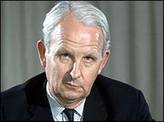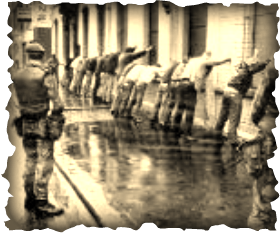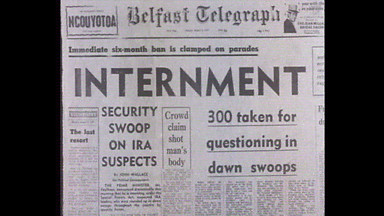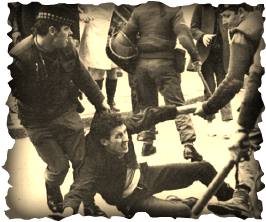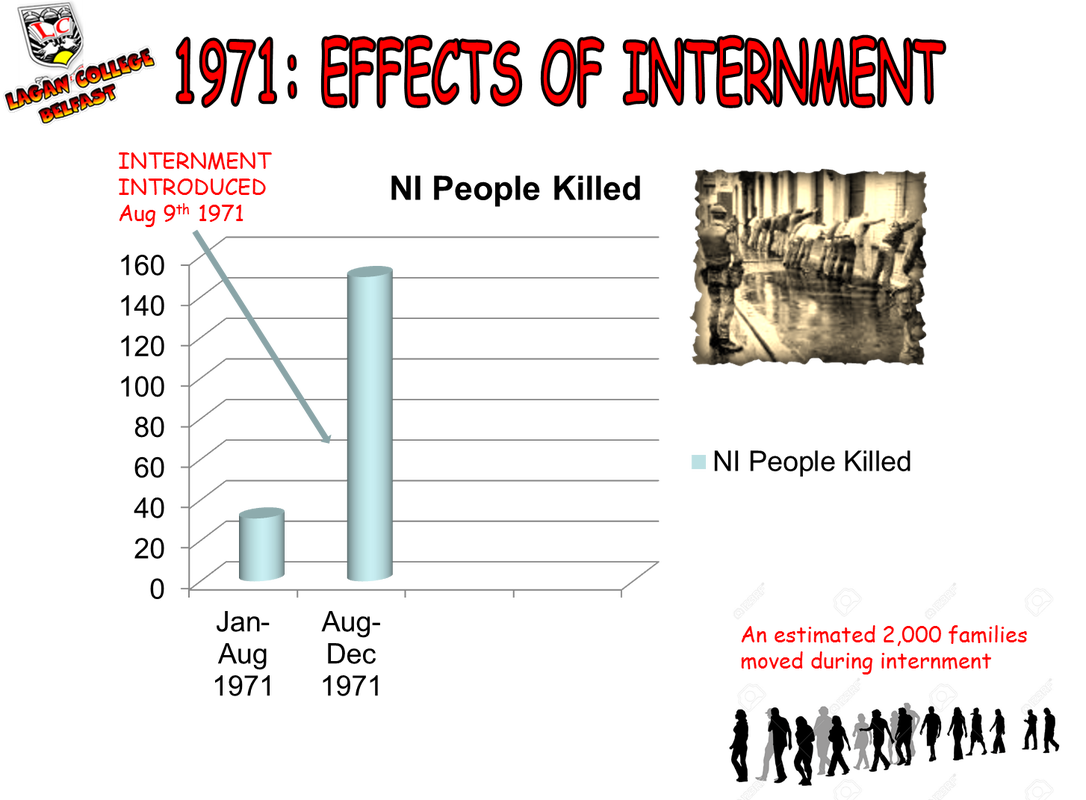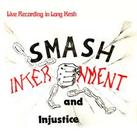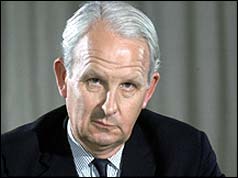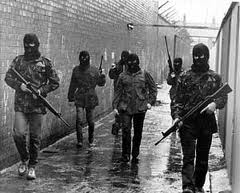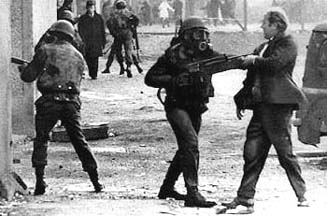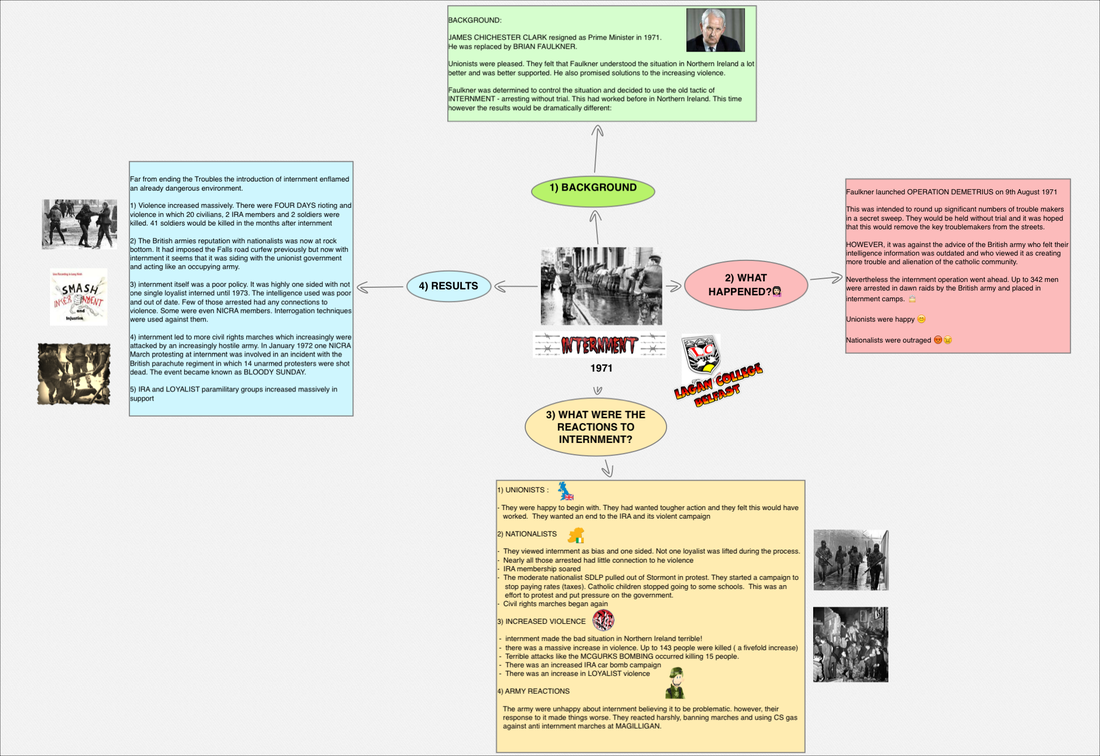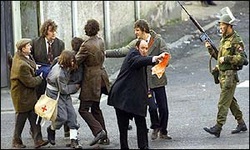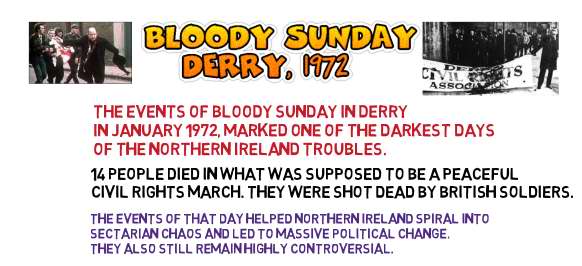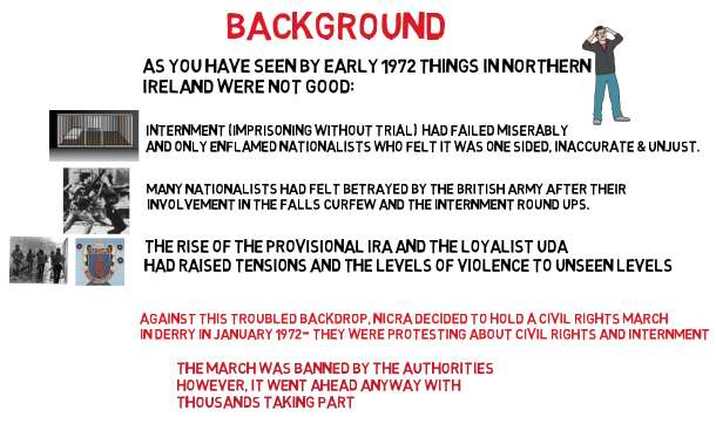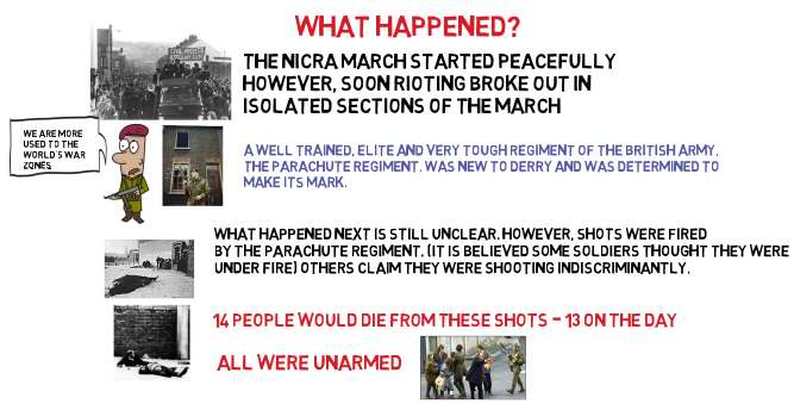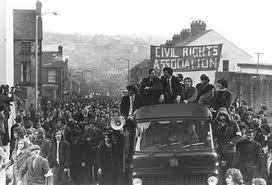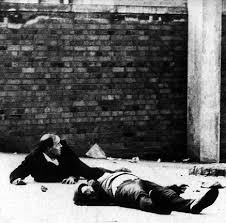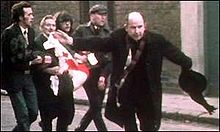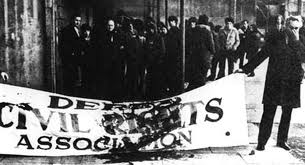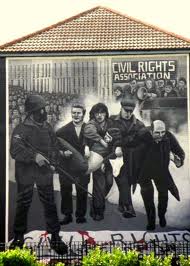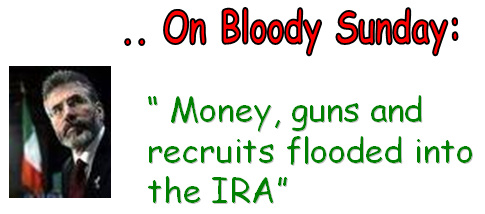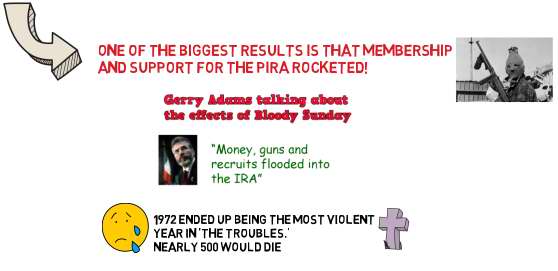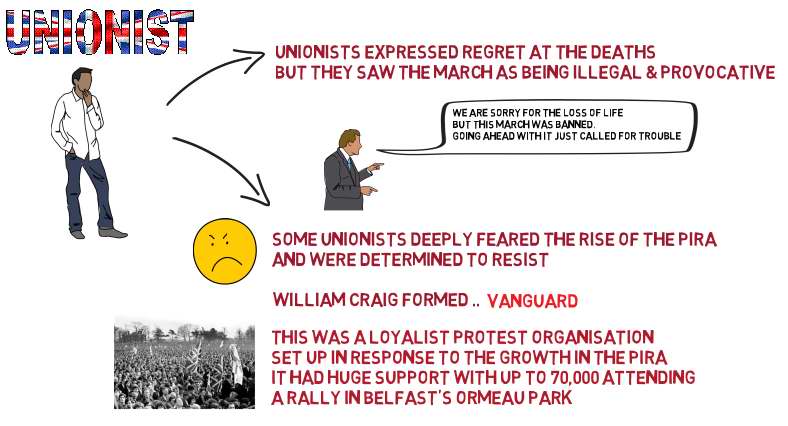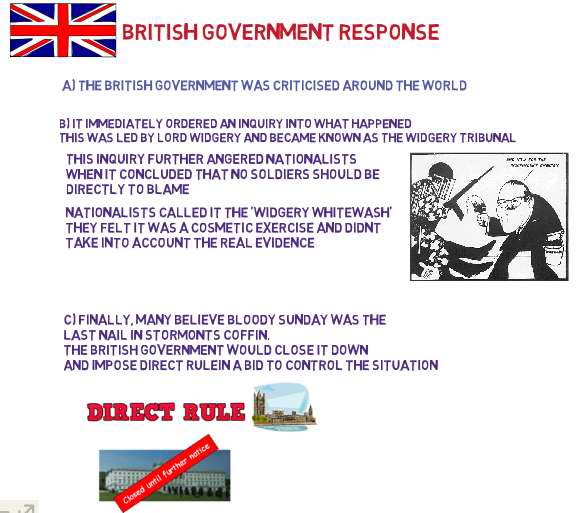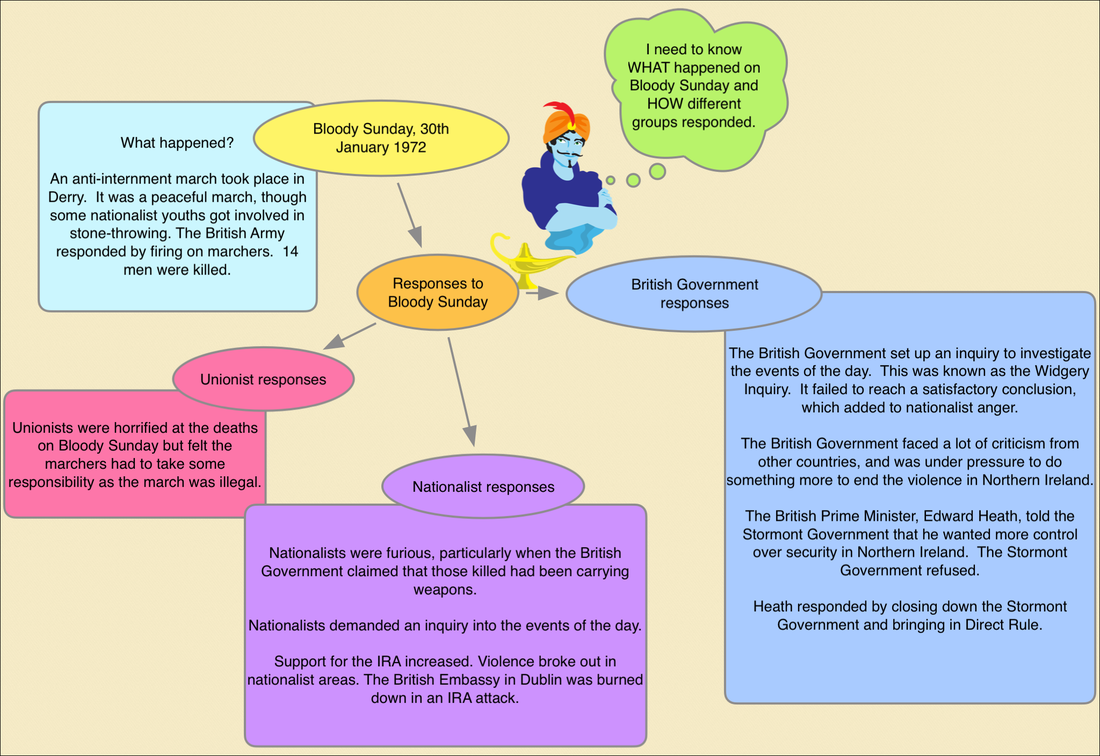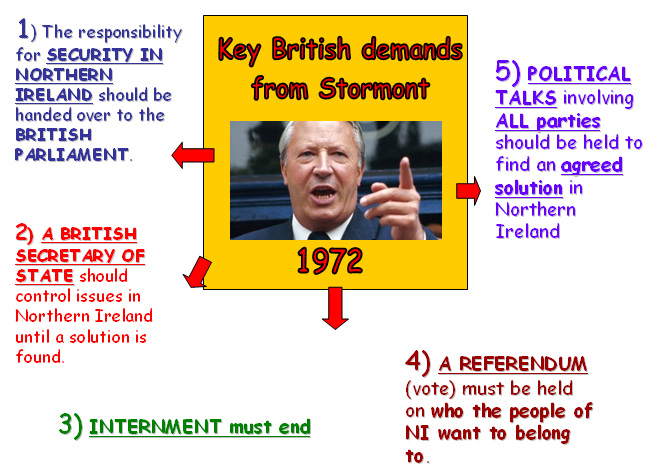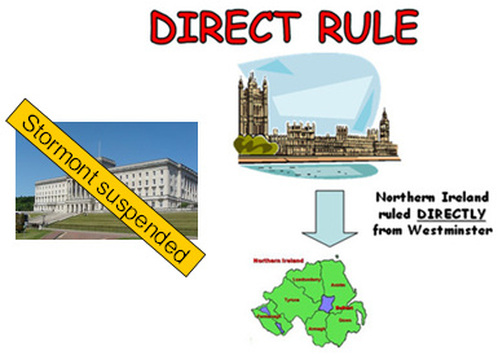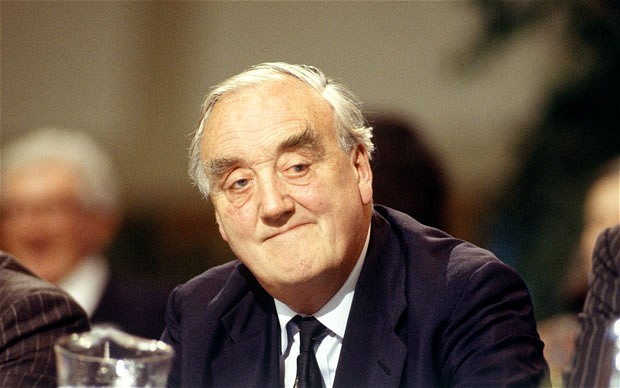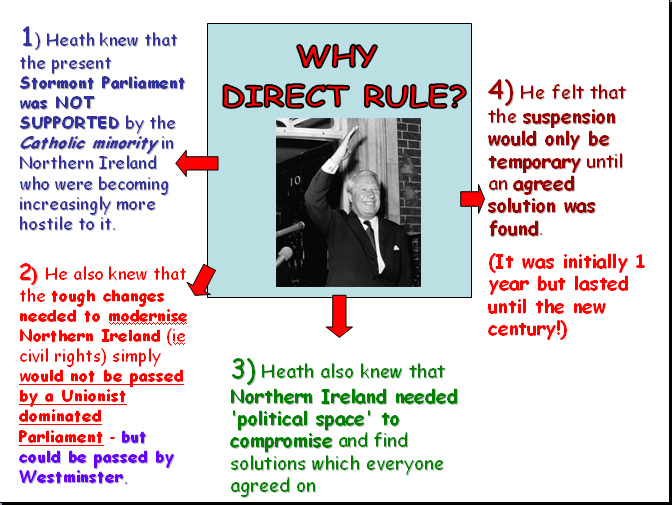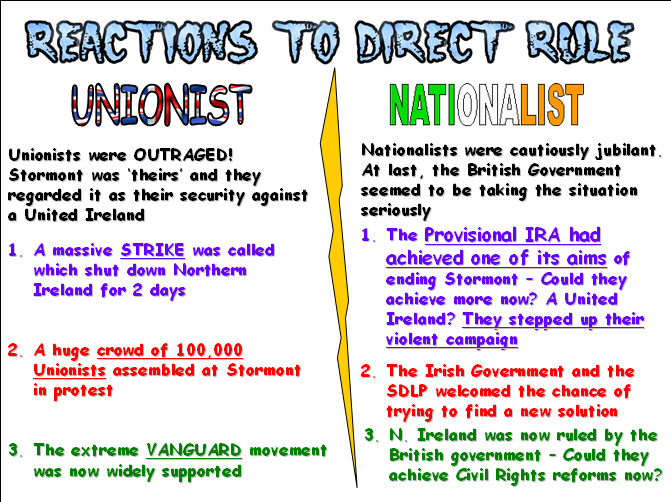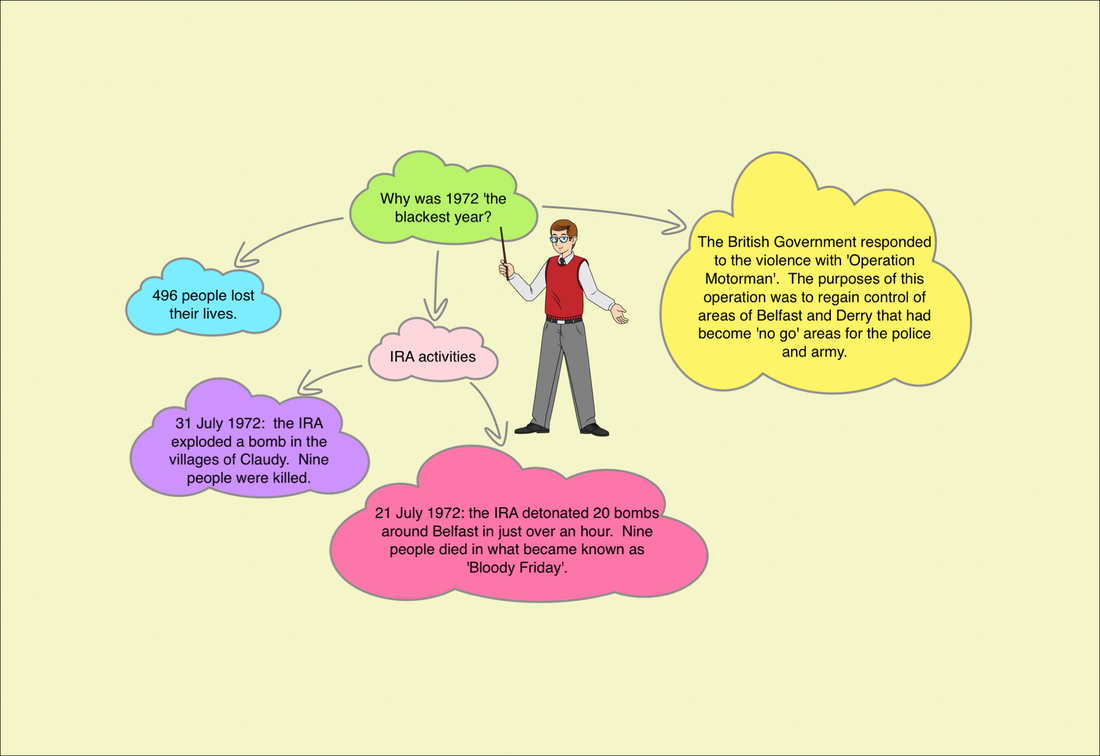< SECTION 2: ESCALATION OF POLITICAL AND CIVIL UNREST
|
Brian Faulkner took over from Chichester Clark as Northern Ireland Prime Minister.
Many people felt Faulkner was the best man to bring the violence to an end. He appeared a lot more professional and had grass roots Unionist support. Faulkner's first aim was to reduce the violence and then find some form of political solution. To do this he decided to use a successful measure from the past which was part of the Special Powers Act. This was was INTERNMENT - which basically meant to imprison without trial This was tried out on 9th August 1971 WHY WAS INTERNMENT SUCH A DISASTER?
|
|
1) NATIONALIST ANGERThe arrest without trial of so many nationalists and no loyalists, yet again, deeply angered an already mistrustful community.
They felt further alienated from the 'State' of Northern Ireland and felt that British soldiers were again doing the Unionist governments dirty work. This had been aimed at Republican paramilitaries but really ended up hurting nationalist communities. CIVIL RIGHTS MARCHES started up again in protest |
2) UNIONIST DIVISIONUnionists, to begin with, reacted positively to internment. Many felt they were they only measures to bring the trouble to an end.
However, slowly many began to realise that the lack of weapons or any real suspects from the operation and the level of nationalist anger had been a huge mistake and was actively driving nationalists towards the IRA. Faulkner found his position severely weakened by the failure. The British Government had regarded internment secretly as 'Stormont's last chance' They began to realise they would soon have to intervene - directly. |
3) GROWTH OF SUPPORT IN THE IRANot only did internment fail to catch the hoped for leadership of the IRA, it actually boosted support for the organisation enormously. Many disaffected Catholics turned to it based on the issue of internment. The IRA itself set out to demonstrate it was not beaten, by a bloody campaign of terror and bombing which killed scores of people and made 1971 the bloodiest year in the Troubles to that date.
|
4) THE ARMYThe use of the British army to arrest and capture 'suspects' again made it look to nationalists like a Unionist tool to keep control. Again it was stuck frustratingly in the middle.
The army lost over 40 men dead in the weeks after internment which was a big increase on anything previously There were signs however, that the British army was in fact toughening its stance in the face of increased opposition. An anti internment march on MAGILLIGAN BEACH was met by a strong army response and the use of CS gas. |
5) LOYALISTS
|
Internment Explained on YouTube
|
|
|
|
|
|
|
|
This mind map covers the whole INTERNMENT topic - Click on it to download the PDF. Use this to understand and revise this topic
Catholic priest Father Edward Daly, who later became Bishop of Derry and will always be associated with Bloody Sunday, witnessed the death of a seventeen-year-old youth as both ran away from soldiers. He said he saw the youth laughing at the sight of a priest running: ‘The next thing he suddenly gasped and threw his hands up in the air and fell on his face. He asked me: "Am I going to die?" and I said no, but I administered the last rites. I can remember him holding my hand and squeezing it. We all wept. We got him to the top of the street. I knelt beside him and told him, "Look son, we’ve got to get you out", but he was dead. He was very youthful looking, just in his seventeenth year but he only looked about twelve.’ |
‘A lot of the younger people in Derry who may have been more pacifist became quite militant as a result of it. People who were there on that day and who saw what happened were absolutely enraged by it and just wanted to seek some kind of revenge for it. In later years many young people I visited in prison told me quite explicitly that they would never have become involved in the IRA but for what they witnessed, and heard of happening, on Bloody Sunday.’' |
|
|
|
1) NATIONALIST RESPONSE:
2) UNIONIST RESPONSE
3) BRITISH GOVERNMENT RESPONSE
Bloody Sunday Explained YouTube Video
|
|
This mind map covers the whole BLOODY SUNDAY topic - Click on it to download the PDF. Use this to understand and revise this topic
One of the biggest long term impacts of Bloody Sunday was the introduction of DIRECT RULE.
This was the suspension, after 50 years of the STORMONT Parliament and the introduction of DIRECT RULE FROM PARLIAMENT IN LONDON.
HOW DID THIS HAPPEN?
This was the suspension, after 50 years of the STORMONT Parliament and the introduction of DIRECT RULE FROM PARLIAMENT IN LONDON.
HOW DID THIS HAPPEN?
- The British public/government were shocked at the escalating situation in Northern Ireland and especially the events of Bloody Sunday. Things seemed to be getting worse, not better.
- They had lost confidence in the Unionist government to handle the situation.
- The Northern Ireland Prime Minister Brian Faulkner had reacted to Bloody Sunday with a demand to: 1) Re introduce the B Specials and
- After Bloody Sunday the British had other ideas and wanted to control SECURITY POLICY in Northern Ireland.
- When the Unionists refused this they were summoned to London where they were given a list of demands by the PRIME MINISTER, EDWARD HEATH.
LIST OF BRITISH DEMANDS TO STORMONT GOVERNMENT (1972)
HOW DID UNIONISTS REACT TO THESE BRITISH DEMANDS?
The Unionist government was dismayed. To sign up to these demands would mean an effective end to the Northern Ireland Parliament at Stormont as they knew it. (Of course the British knew this)
- In response the entire Northern Ireland Government RESIGNED in protest.
- The British Prime Minister, Edward Heath, responded by IMPOSING DIRECT RULE OF NORTHERN IRELAND FROM THE BRITISH PARLIAMENT in Westminster.
|
While Direct Rule was welcomed by nationalists, it did not stop the violence. In fact, 1972 turned out to be the bloodiest year of the Troubles.
Atrocities, bombings, shootings and riots became an everyday occurrence in Northern Ireland. There were over 2,000 bombings and 10,000 shootings in just 1972 alone. 496 people died as a result with thousands wounded. Some of the main events of this year are shown here |
|
|
|
|
|
The IRA was heavily CRITICISED for the Claudy and Bloody Friday bombings, The reaction was so bad that the IRA realised it had suffered a set back.
The incidents also allowed the British army a chance to establish control over ALL of Northern Ireland NO GO AREAS: Since the Troubles began, certain sections of mostly Republican areas were sealed off and regarded as OUT OF BOUNDS or NO GO AREAS for the RUC and later the British army. This allowed paramilitary control of these areas. The British Government realised that these areas gave the paramilitaries the chance to recruit supporters and members, stockpile arms and allowed them some form of control. HOW DID THE BRITISH GOVERNMENT REACT? The Government's first main task after Direct Rule was to ask the British army to end these 'No Go' Areas and therefore hopefully end the trouble. In July 1972 a MASSIVE MILITARY OPERATION took place involving BRITISH ARMY TANKS, SOLDIERS, ARMOURED VEHICLES and EVEN A NAVY SHIP. This use of the British army leveled No Go areas across Northern Ireland including Derry. This operation was called OPERATION MOTORMAN WAS IT SUCCESSFUL?
|
OPERATION MOTORMAN
|

